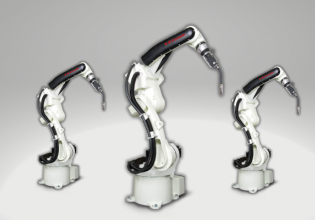Autonomous Material Transport for Warehouse Labor Woes
The global warehouse automation market is projected to double in the next five years. To help meet growing demands, Vecna Robotics offers hardware and software to enhance workflow efficiency and augment worker tasks.
U.S.-based technology and robotics company, Vecna Robotics, announced the release of both software and hardware upgrades for its AFL-class autonomous forklift. The upgrades are intended to help improve the process of material transport between equipment and machines across manufacturing and warehousing workflows.

Automation in warehouses frees up human workers to tackle more specialized tasks. Image used courtesy of Canva
Warehouse Automation
According to the Business Research Company, the global warehouse automation market is projected to reach $17.47 billion in 2022 from $15.21 billion in 2021 at a compound annual growth rate (CAGR) of 14.86%. When looking toward 2026, the market is expected to reach $31.03 billion at a CAGR of 15.45%.
After the coronavirus pandemic and amidst the war in Ukraine, the world has witnessed disrupted supply chains, increased prices of commodities, labor shortages, and an upsurge in automation technologies to combat some of these issues.
Vecna is endeavoring to respond to customer demand for more automated workflows, including low-lift with risers and conveyors. Not only is this hoped to alleviate the labor shortage issue but also create a more evenly balanced workforce of robots and humans. With a helping hand from robotics, human workers can be freed up to tackle more high-value and specialized tasks.

Vecna's AFL-class autonomous forklift. Image used courtesy of Vecna Robotics
Autonomous Material Transport
Vecna’s 3000 lb autonomous mobile robot (AMR), Vecna AFL, takes the form of an autonomous forklift truck with a lift of up to 60”. The bot is suited to passing goods over to conveyor belts, carts, and wrappers for workflows including picking and putaway, end-of-line/finished goods, work in progress, as well as packaging and replenishment.
According to Vecna, Vecna AFL can help its customers reduce material handling costs by as much as 30% for more common workflows, improve the efficiency of operations, and maintain uptime above 99% through Vecna’s Pivotal Command Center.

With Pivotal Autonomous Navigation, Vecna’s bots can change paths to avoid obstacles and improve efficiency. Image used courtesy of Vecna Robotics
Vecna’s bots use Pivotal Autonomous Navigation with combined vision and light detection and ranging (LIDAR) sensors to provide three-dimensional sensor perception. With this vision system, Vecna AFL bots can navigate their surroundings while mapping the most efficient routes, as well as avoid obstacles, and identify the correct pallets to pick up. The bots also need no additional infrastructure or markings to help them with navigation.
Autonomous Forklift and Software Upgrade
The software and hardware updates support above-ground workflows, including inbound staging to automated storage and retrieval (AS/RS) induction. Key release features include:
-
Flexible integration with tablet user interfaces (UIs), application programming interfaces (APIs) with warehouse management systems (WMSs, such as BlueYonder and Manhattan), and barcode scanners for verifying payloads
-
Flexible management of operations using Pivotal enables customers to change mission tasks and routes for robots to deliver the correct payload to the right location and in good time
-
Compact bumper form for navigation in confined workspaces
-
Next-generation fork carriage sensor fusion for smart payload identification, improved misaligned pallet adjustments, and visibility in real-time through Pivotal Command Center
Warehouse Augmentation
Vecna hopes that its latest updates to the Vecna AFL and its newest software will help companies optimize warehouse processes. As the warehouse automation market continues to grow over the next several years, Vecna hopes to augment workers from less repetitive and dull to more human-centric tasks, letting robots do the heavy lifting.






